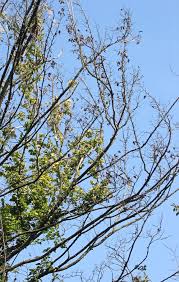Insect Blog

Dutch Elm Disease
May 14th, 2019
Plants Affected:
American, English and certain other hybrid elms. Siberian and Chinese elms are resistant to the disease but have been known to die from Dutch Elm Disease (DED).
Symptoms:
In early to mid-summer leaves will turn a light green color, wilt and curl – eventually turning brown and remaining attached to the limb. Yellowing leaves are not a symptom of DED.
Life Cycle:
DED is caused by a fungus which invades the water-conducting vessels of the tree and clogs them. It is spread primarily by the Elm bark beetle which breeds in dead wood. It can also spread through root grafts from tree to tree or through wounds caused by storms, squirrels, pruning, etc., which attract the beetle.
Treatment/Care:
There is no effective cure for DED and preventive controls can still result in a tree contracting the disease. Control revolves around preventive chemical treatments for the Elm bark beetle, the primary carrier of DED. Additionally, removing dead wood and disposing of it by burial will reduce breeding sites of the beetle. Trenching between elms to sever root grafts and pruning only when the tree is dormant will further slow the spread of DED. Chemical fungicide treatments are often ineffective once the tree gets DED because it spreads extremely fast. Very high value elms can be treated preventively with fungicides, but only at great cost.
